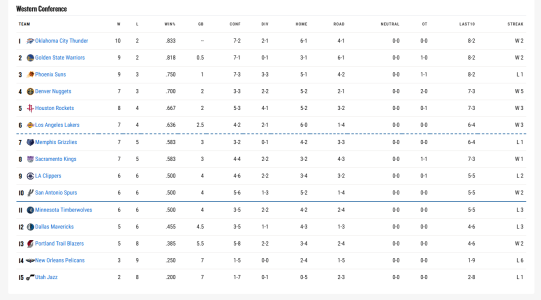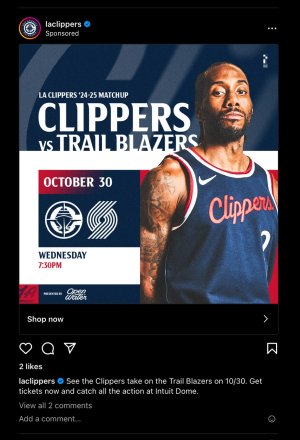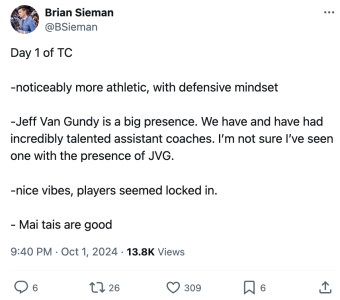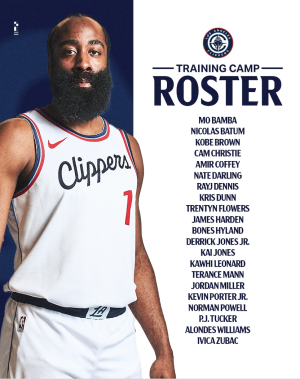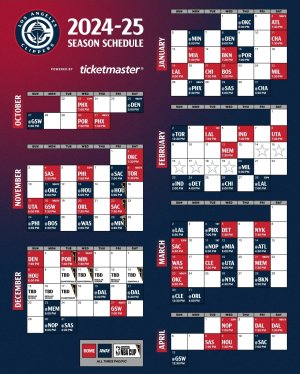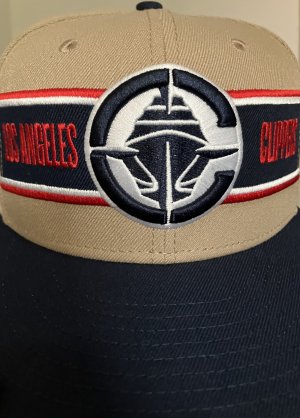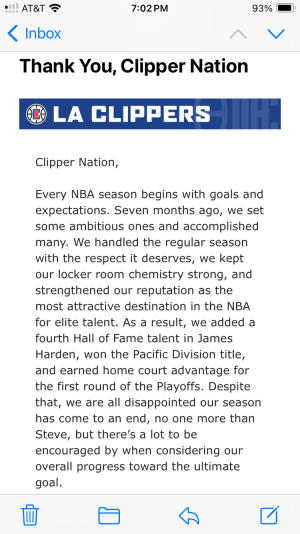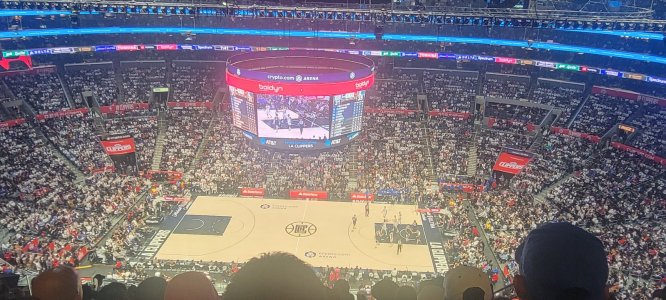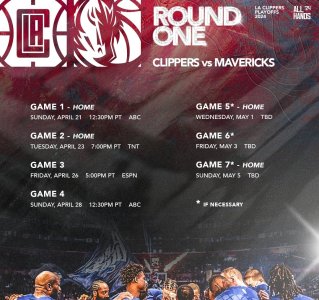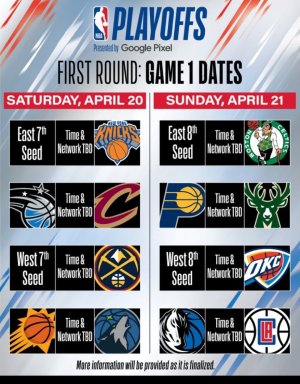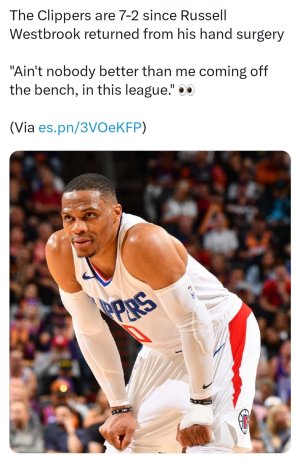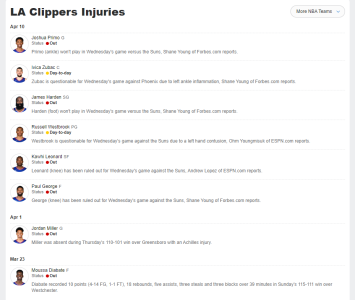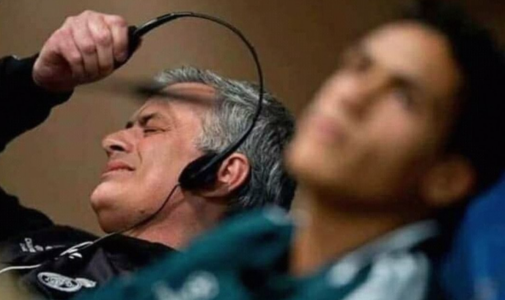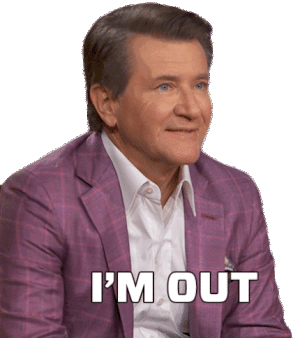- Apr 23, 2015
- 8,705
- 2,370
For those who want a more detailed look about how we can acquire KD, here's how (Hint: Hard, but very possible if he actually wants to come to LAC)
First tweeted back on June 6th that the Clippers were interested in Kevin Durant, likely by sending back Blake Griffin in a sign-and-trade. Durant's a top-4 talent in the NBA (with LeBron, Steph, and Kawhi, in no particular order), and while it breaks my heart to even talk about moving on from Blake, we're at the point where it has to be discussed.
I've heard a LOT of different rumors and scenarios, some with legs, some without. Here's some realistic options:
[h3]Old Fashioned Sign-and-Trade[/h3]
The simplest way for the Clippers to go from a cap-maneuvering perspective would be a straight-up sign-and-trade where they send one of their stars back to Oklahoma City. Chris Paul, Blake Griffin, and DeAndre Jordan all work mathematically, so it's a matter of which max-salary star Doc Rivers is comfortable parting ways with. A lot of speculation is centered around Blake Griffin, because of the time he missed last season and his higher appeal as a superstar and first option offensively. DeAndre Jordan also would seemingly fit better if the Clippers were to add a Durant-like wing scorer.
Kevin Durant's maximum starting salary is 26.6 million, so Blake Griffin's 20.1 million and DeAndre Jordan's 21.2 million both get the job done.
In this scenario, the Clippers' off-season would largely go on normally post-trade--they'd have their three bird rights players in Austin Rivers, Jeff Green, and Jamal Crawford, along with the mid-level and bi-annual exceptions. They would, however, be hard-capped at an estimated $117 million (triggered by acquiring a signed-and-traded player), which would make fitting those bird guys and the MLE pretty difficult. With Durant's help on the perimeter, the Clippers would probably have to let one of their bird players leave to give themselves breathing room under the hard cap.
[h3]Move Blake or DeAndre to a Third Team, Sign KD[/h3]
If the Clippers get a commitment from Durant that he'll sign with them, they could opt to maximize their value by trading Blake Griffin or DeAndre Jordan into a team's cap space, renouncing their bird rights free agents, and signing Kevin Durant outright. When you remove Griffin or Jordan's salary and the cap holds of Rivers, Crawford, and Green from the Clippers' cap sheet, you're left with enough money to sign Durant with room, and have some left over to get some supporting guys in return from the Blake trade.
For example, the Clippers could send Blake Griffin to Boston for Jae Crowder, Jaylen Brown, and some combination of assets that don't come with a cap hold (unsigned rights to second round picks, future picks, or Ante Zizic/Guerschon Yabusele, whose cap holds go away if they agree to stay in Europe their rookie year). In this instance, they'd take back enough salary that they'd be left with less than a full max slot for KD--he'd have to take a paycut of about $108,000, which isn't too unrealistic.
The best part is that Boston wouldn't be able to hold the Clippers hostage, because tons of teams have room to add Blake Griffin, and the Clippers can let those bid against each other. If Boston's holding out, the Clippers can go talk to Philadelphia, Minnesota, Orlando, Utah, Milwaukee, Phoenix, or any number of teams--as long as their packages don't give the Clippers too much money back. How much can they take?
When calculating cap room, teams have to factor in "roster holds", which are minimum-salary slots for every empty roster spot under 12. If Paul Pierce retires, and Branden Dawson is waived, the Clippers will have Paul, Redick, Griffin, Jordan, C.J. Wilcox, and Brice Johnson on the roster--leaving 6 roster holds valued at $543,471 eating into their cap room. Losing one of Griffin/Jordan, but adding Durant, is a wash. How much salary they can take back in trade depends on how many players they take back, because each additional incoming player eliminates one more roster hold, increasing the amount by $543,471 (unsigned second-round picks or stash guys who don't have cap holds don't take up a roster spot and therefore don't eliminate roster holds). Here's the chart for Blake trades:
Here's the chart if the Clippers move Jordan:
Players Incoming Salary Allowed 1 $9,586,479 2 $10,129,950 3 $10,673,421 4 $11,216,892 5 $11,760,363
Jordan's numbers are all about a million more than Griffin's, because he has a higher salary than Blake, but Jordan will also likely bring less talent back in return, no matter how much salary comes in. Any leftover room can be used in free agency, possibly by keeping Austin Rivers' bird rights ($5,910,512 minus one $543,471 roster hold = $5,367,041 needed to keep his bird rights) and/or Branden Dawson's non-guaranteed contract ($874,636 minus his $543,471 roster hold = $331,165 needed to keep his bird rights). The Clippers would then have the room mid-level exception ($2.898 million starting salary for up to 2 years) to lure a veteran who is willing to take a paycut.
Players Incoming Salary Allowed 1 $10,611,315 2 $11,154,786 3 $11,698,257 4 $12,241,728 5 $12,785,199
All of this is contingent on Paul Pierce retiring. If he stays for another season, all of the "incoming salary allowed" numbers in those charts go down by $2,984,449 (Pierce's $3,527,920 salary minus his $543,471 roster hold), which severely limits the Clippers' options but doesn't deplete them, especially given the reality that the team would ultimately settle for an imperfect deal if a Kevin Durant signing was pending.
Here's your task in the comments: search around the league and find the best packages for Blake that fit within those salary constraints (realistic, please: no trading Blake for Andrew Wiggins AND Karl-Anthony Towns). Turning Blake Griffin into Kevin Durant is a talent upgrade for this roster, but can the Clippers get enough of a return for Blake to make renouncing Rivers, Crawford, and Green worthwhile? I think so, and I think that multiple teams present options to make that worthwhile.
[h3]The Dream Scenario[/h3]
Now, this last option is beyond a pipe dream--it's essentially an exercise in mathematics only, because I'm not sure how the Clippers convince all of the parties involved to help them in the way necessary to pull this off. Anyway, here goes nothing.
As stated above, Kevin Durant's starting salary is 26.6 million. If the Clippers were to pull off adding him without losing a star, they'd have a $104,554,360 cap figure: seven players (Paul/Redick/Durant/Griffin/Jordan and Wilcox/Johnson). They would be hard-capped at approximately 117 million, leaving them with solid wiggle room to avoid hitting that hard cap figure. They would still be able to use the full MLE ($5.628 million starting salary for up to four years) and BAE ($2.203 million starting salary for up to two years). Sounds like a dream world, right?
Here's how it works: the Clippers want to take back $26.6 million. The salary-matching rules for an amount that high are as follows: you can take back 125% of outgoing salary plus $100,000. In other words, the Clippers need to send out KD's salary - $100,000 * 0.8, which, for the $26.6 million, is $21.2 million. So, they just have to put together a massive, multi-team combined sign-and-trade deal where they send out $21.2 million in salary so that they can bring in $26.6 million with Durant being signed-and-traded to the Clippers. It would be the type of impossible and monumental transaction that the league has never seen--easy, right?
It's made even more complicated by the base-year compensation (BYC) rule in the NBA's CBA, which is designed to prevent teams from signing their own free agents to inflated contracts just to facilitate trades, which would be exactly what the Clippers would need to do. Under this rule, players like Jeff Green, Jamal Crawford, and Austin Rivers have limitations placed upon their outgoing salary for sign-and-trade purposes: if they get a raise of over 20%, their outgoing value for trade salary-matching is either their old salary or half of their new salary, whichever is greater.
So, how do they get to 21.2 million? Jeff Green's salary last year was $9,300,000, so it's safe to say that he won't get double that. Jamal Crawford's salary last year was $5,675,000--is double that possible? Yes, but it's more likely that he lands somewhere underneath that. Those two together are $14,975,000--we need to find $6,225,000 more to make it work.
Austin Rivers made $3,110,796 last year. He's due to make well over double that, which will help significantly. If Rivers gets a $12,000,000 offer, the Clippers are just $225,000 short, which is reasonable enough of a paycut for Kevin Durant to take if it means ending up on such a stacked team. Even if he doesn't want to do that, Branden Dawson's non-guaranteed deal going out would more than cover the difference.
If the Clippers would rather keep Rivers' cap hold and re-sign him, they can try to find the $6,225,000 in other places. Paul Pierce is due to make $3,527,920 next year. If he's going to retire anyway, one of the teams taking the Clippers' other players could just let Pierce retire once he gets there. If he's going to play, the Clippers could give a team C.J. Wilcox for their trouble, and let that team waive Pierce (who probably would retire anyway if traded). Wilcox's salary of $1,209,600 combined with Pierce's number puts them just $1,487,480 short of being able to take on Durant's $26.6 million. Branden Dawson's $874,636 moves the Clippers within $612,844 of Durant, and that's definitely within feasible paycut range for Durant.
Here's the problem with this pipe dream: why the hell does anyone except for the Clippers or Durant do it? The Clippers want KD, that's obvious. For this to be relevant, KD has to want the Clippers too. But why do Crawford and Green (and maybe Rivers) get signed-and-traded instead of just leaving? Why do the teams that are getting those guys help the Clippers get KD back in a trade when they can just sign those free agents with cap room? Why does Oklahoma City help Kevin Durant flee to a Western Conference rival who can't sign him without their help? It's beyond me. Maybe you can use second-round picks to convince Crawford and Green's new teams to do sign-and-trades, but I'd imagine that it would be hard to get Oklahoma City on board.
There you have it: the three ways for the Clippers to end up with Kevin Durant: the easy and most realistic path of sign-and-trade, the slightly-harder-but-still-worth it path of moving Blake to a third team and signing Durant with cap, and the impossibly complicated and unrealistically difficult path of teaming Durant with the Clippers' existing core. If Doc Rivers pulls the last move off, I will refuse to ever listen to complaints about his front office moves again for the rest of time.Clippers Off-Season 2016: Kevin Durant Scenarios









